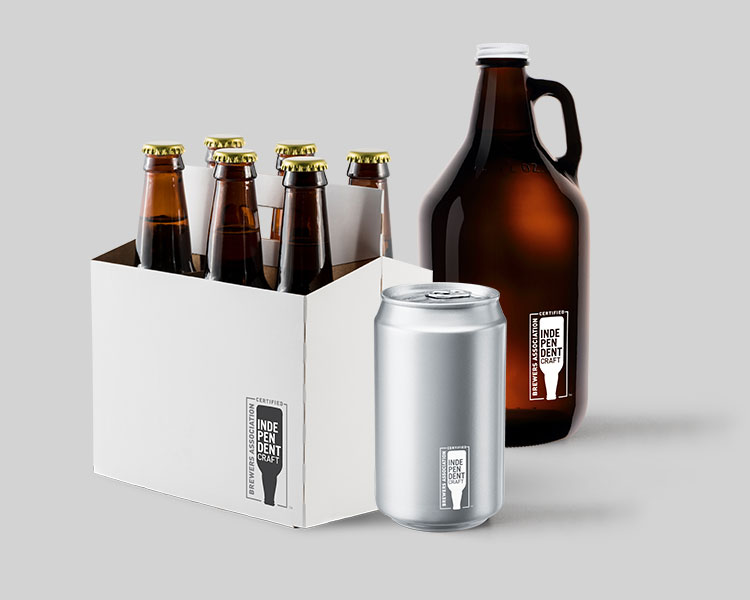How do you know if the beer you’re buying is truly from a craft brewer? The Brewers Association (BA), publishers of CraftBeer.com, is launching the independent craft brewer seal, which could be a game changer in terms of transparency on the shelf.
The BA says the new seal is a visual signal to help you make decisions when you shop.
“A lot of beer lovers really care about who makes their beer and they want to make sure it comes from a small and independent craft brewer,” explains Paul Gatza, the director of the Brewers Association. “What this provides is a clear message to the beer drinker.”
(VISIT: Find a U.S. Craft Brewery)
That means in the coming weeks and months, you’ll start seeing the seal on craft brewers’ beer bottles, cans, labels, tap handles and websites. The seal is your signal that the beer you’re buying is from an independent craft brewer.
The BA says global brewers’ buying spree of once-independent craft brewers in the last half decade has created muddy waters for drinkers who want to support independent brewers.
“The beer lover has a right to know when they’re purchasing a beer from an independent craft brewer or big beer.” ~Julia Herz, CraftBeer.com Publisher
“Big beer has gotten into the full-flavored beer space and are now more regionally located with their acquired formerly independent breweries,” explains Julia Herz, director of the BA’s Craft Beer Program and CraftBeer.com publisher. “The beer lover has a right to know when they’re purchasing a beer from an independent craft brewer or big beer. This seal will allow them to make their choice with a visual mark.”
(READ: 7 Breweries Worth a Detour)
An Idea Years in the Making
Gatza says the independent craft brewer seal has been decades in the making. In 1994, a group of brewers exploring craft beer authenticity evaluated the idea of a seal but later shelved it.
A little more than a decade later (2006-2007), Gatza says the BA’s Public Relations and Marketing Committee explored the idea. Eventually, the BA Board of Directors, which is made up of brewery members, decided not to move forward with the seal. Instead, they created the craft brewer definition.
If past committees had vetoed a seal not once, but twice, what makes 2017 the right time?
“A lot of brewers have realized they want to be able to differentiate,” Gatza tells CraftBeer.com. “We’re hearing from a lot of our member breweries that they are looking for something like this now.”
(VISIT: 2017’s Great American Beer Bars)
How Breweries Get the Seal

Craft brewers who want the seal do not have to be a BA member, but they need to meet criteria. The criteria are:
1. The brewer must fit the BA craft brewer definition:
- Small – Annual production of 6 million barrels of beer or less (approximately 3 percent of U.S. annual sales).
- Independent – Less than 25 percent of the craft brewery is owned or controlled by a beverage alcohol industry member that is not itself a craft brewer.
- Traditional – A brewer that has a majority of its total beverage alcohol volume in beers whose flavor derives from traditional or innovative brewing ingredients and their fermentation. Flavored malt beverages (FMBs) are not considered beers.
2. The brewer must have an active TTB license to commercially brew beer in the United States.
3. Breweries will sign a licensing agreement that will cover many bases, including if a brewery sells. If they are no longer a craft brewer, they aren’t allowed to license the seal. They’ll have to remove it from future packaging.
(COOK WITH BEER: 4 Brunch Recipes We Love)
Independent Craft Brewer Seal Design
The independent craft brewer seal looks like a beer bottle flipped upside down.
“The upside down nature of the bottle is truly representative of what small and independent craft brewers have done to the U.S. beer scene,” Herz explains. “[They’ve] turned things upside down — brought back the localization of beer movement, took us toward a full-flavored beer movement for variety and choice from thousands of breweries as opposed to hundreds.”
Look for the seal this summer as craft brewers incorporate it into new bottle labels, can art and more.
CraftBeer.com is fully dedicated to small and independent U.S. breweries. We are published by the Brewers Association, the not-for-profit trade group dedicated to promoting and protecting America’s small and independent craft brewers. Stories and opinions shared on CraftBeer.com do not imply endorsement by or positions taken by the Brewers Association or its members.


Share Post